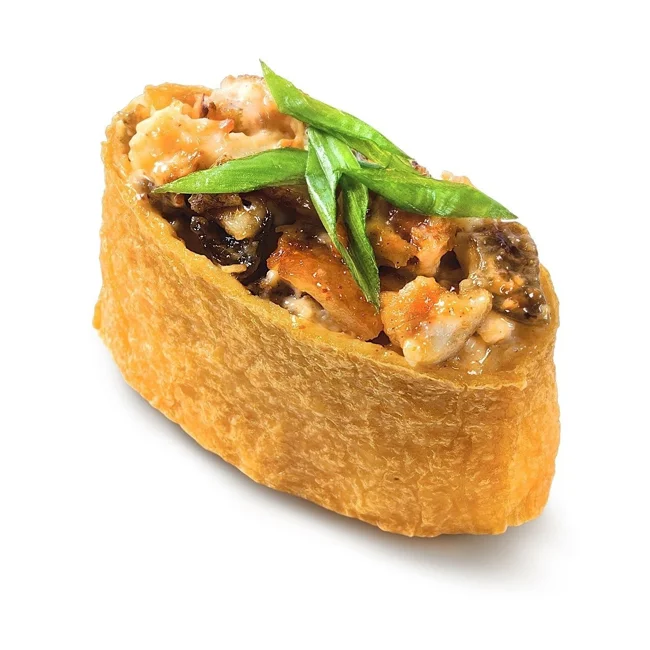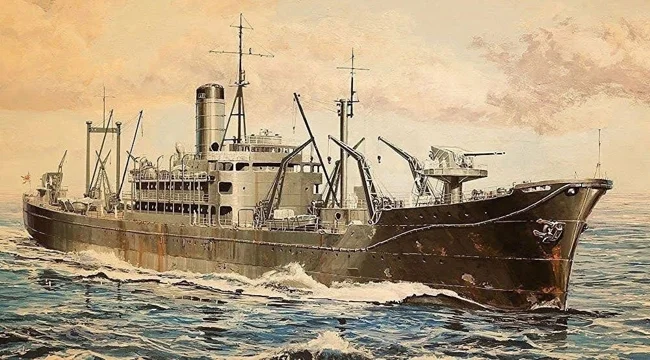Food allowance in the Imperial Japanese Navy. What did Japanese sailors eat? (5 photos)
The nutrition of the personnel of each of the world's fleets has its own unique history of origin and development. The Japanese Navy is no exception. They had to overcome many difficulties, but thanks to this, the history of the nutrition of Japanese sailors is truly interesting. 
Simple flour that saved many lives from Beriberi
The difficult path of origin
The standardization of nutrition in the Japanese troops began in 1873, when the conscript army and navy were formed. The diet was based on tofu cheese, vegetables, and rice and rice products. As a result of this diet, soldiers and sailors suffered en masse from Beriberi (various disorders caused by a lack of vitamin B1 in the body). Naval doctor Takaki Konehiro noticed that sailors of other countries were not susceptible to this disease. Having studied their diet, he came to the conclusion that this did not happen due to the presence of bread, barley and other products in the diet that were not available in the Japanese navy. Conservative-minded senior military officials put up long and stubborn resistance to the doctor and his arguments, but, ultimately, Konehiro managed to introduce mandatory side dishes to food and add flour to dishes whenever possible. This really helped, and the sailors of the Imperial Japanese Navy stopped suffering from the disease. Thus, Dr. Konehiro was able to overcome a mass disease, the causes and treatment of which were officially recognized by the world only 10 years later. Despite this, the army never agreed with the point of view of the ordinary ship's doctor, and the ground forces suffered from Beriberi for a long time.
Focus on the West
The further development of the nutrition system also proceeded with an eye on the Western maritime powers. After the First World War, Japanese specialists began to understand that soldiers and sailors needed many more calories than were prescribed by the standards at that time. Two steps were taken to correct the situation. Firstly, in 1929, the daily food norm was set at 4,000 calories instead of 1,300-1,700 according to the standards of 1910. Secondly, the active introduction of such products as meat, lard, potatoes into the diet of personnel, as well as new methods of cooking for Japanese cuisine (deep frying and stewing) began. All this was again met with resistance, but this time from the sailors. At first, there were even cases of forced feeding of personnel. Soon, the sailors realized the benefits of such changes and accepted them. 
Inarizushi - a dish born with the advent of deep-frying in Japanese naval cuisine
Advanced solutions and technologies for food in the navy
The food of the Japanese Navy by World War II was a truly unique phenomenon among the world's navies - it was a combination of traditional dishes with Western products and cooking technologies. And the provision, storage and preparation of food were organized in a way that no other country had. 
Food supply ship IJN Irako
Ships and submarines had their own galleys and even electric refrigerators and refrigeration chambers, which was extremely uncharacteristic for the latter class. Such technologies even in the German submarine fleet became available only on type XXI submarines. Moreover, it was in Japan that a unique class appeared - food supply ships. They could not only carry a huge amount of supplies, capable of feeding tens of thousands of soldiers for a month, but also cook meals and drinks en masse in specially equipped huge kitchens. The appearance of such ships near the squadrons raised the morale of Japanese soldiers and was perceived as a kind of small holiday.
Modern Heritage 
Joint meal of Japanese cadets on the training sailboat Kaiwo Maru
The diet of modern sailors of the Japan Maritime Self-Defense Force has remained virtually unchanged. The basis of the diet is rice, fish, soy and its derivatives. To them are added other seafood, meat, vitamins (especially A, B1 and C), as well as various sweets and drinks to maintain the morale of the soldiers. In addition, a lot of foreign cuisine is prepared in the galley. Sailors especially like fish or meat curry. They still don't like bread very much, so they usually serve side dishes instead, or add flour to the food.
























